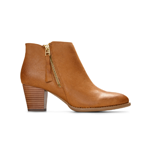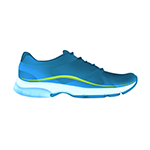
TOP 5 FOOT PROBLEMS & HOW TO TREAT THEM
Ouch! What a pain in the foot. April is National Foot Health Awareness Month so we’ve teamed up with our in-house expert, Dr. Jacqueline Sutera a surgically trained doctor of podiatric medicine specializing in the prevention and treatment of foot pathology, to learn more about the top 5 foot problems. Here are her recommended remedies to help relieve the pain, swelling and other symptoms that can be experienced.

Plantar Fasciitis/ Heel Pain
Plantar fasciitis is a dull to severe pain in your heel caused by a strain and inflammation of your plantar fascia (foot tissue). This can be caused by excessive pronation or standing/walking on hard surfaces for long periods of time. Wearing proper shoes for heel pain relief and making sure that you are stretching and massaging regularly can help alleviate some of the pain.
- Stretch the calves – an easy, simple way to do this is by pressing your toes against a wall with the heel pressed to the floor. Flex and hold this stretch for 15-20 seconds (make sure to alternate feet).
- Massage the arches of your feet – adjust the amount of pressure as you see fit and can do so comfortably.
- Replace old shoes with women’s shoes with arch support or comfortable, thick-soled shoes.
- Ice the foot and/or take anti-inflammatories – this can help reduce inflammation.
- Avoid going barefoot.
Tendonitis
Tendonitis is the inflammation or irritation of the tendons which can be the result of an injury.
- Rest, ice, and/or take anti-inflammatories.
- Use elastic bandages to reduce soreness and elevate the foot when sitting or resting.
- Avoid going barefoot and wear comfortable, thick-soled shoes.
- Replace your old shoes with shoes with arch support.

Bunion/Hammertoes
A bunion is a bony bump on the outside base of the big toe, and a hammertoe is the abnormal bend or downward curve of the big toe. Both conditions can be caused by tight, ill-fitting shoes, arthritis or can be present at birth.
- Wear shoes with a wide and high enough toe box to accommodate the foot comfortably. Open shoes and adjustable strappy sandals can be very comfortable in the warmer weather, such as these orthotic sandals.
- Pad the toes with bunion booties – this can help relieve pressure.
- Wear toe caps – this can protect the area from rubbing and friction.
- Wear orthotic insoles and supportive shoes with a thicker sole.
- Avoid narrow, pointy and high heels.
- Lightly stretch and massage the toe joint, and ice it at the end of the day.
Neuroma
Neuroma is the growth or thickening of nerve tissue around the toes which can be caused by injury, high heel use and/or running. Symptoms include a burning sensation, numbness or a tingling feeling.
- Stretch the forefoot by pulling apart the toes and massaging the forefoot, including the space between the metatarsals (the group of 5 long bones in the foot).
- Ice the area that is experiencing pain.
- Wear a neuroma pad – this can help spread the bones around the metatarsal area and relieve pain.
- Avoid thin, flat, high and pointy shoes – instead try orthotic shoes or shoe inserts.
Ingrown Nails
Ingrown nails are irregular, curved nails that have grown into the flesh. This condition can be caused by injuring the toe or by wearing socks or footwear that apply too much pressure and/or tightness.
- Cut your nails straight across and only slightly round out the corners.
- Avoid tight, pointy shoes – this can worsen discomfort.
- Place a tiny piece of cotton under the corner of the nail and make sure to change out the cotton daily – this technique will gently lift the nail as it grows.
- Use bacitracin and band-aids – this can help prevent infection.
- Soak your feet in Epsom salts for about 20 minutes daily – this can reduce swelling and soften the nail.
Although it may not always be running through your mind, foot care is a vital part of your overall health. Learn more about National Foot Health Awareness Month and other health tips for your feet on our blog.











